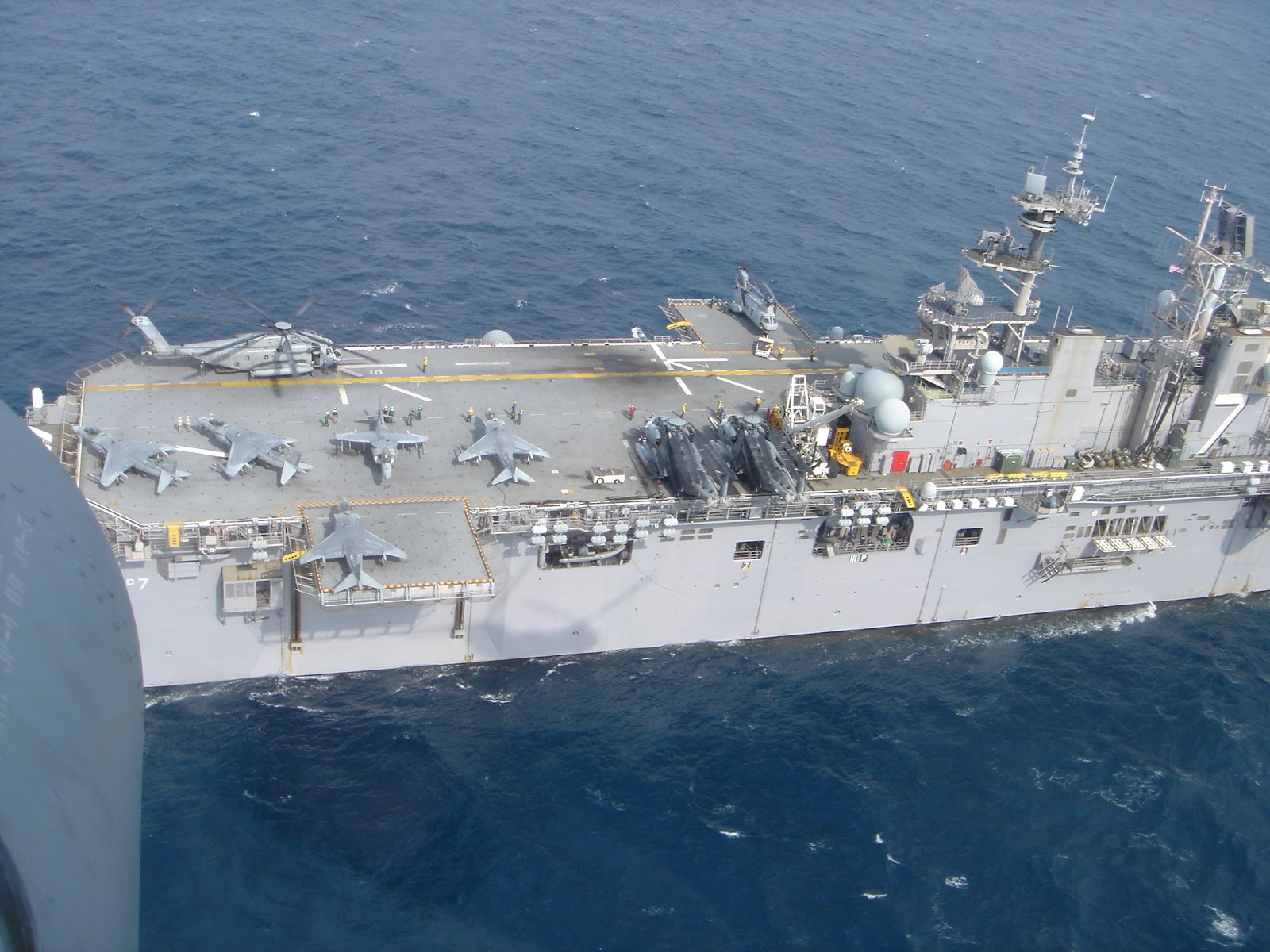Civilian ATC and Military ATC at Sea
There are many similarities between the Air Traffic Control that manages the Controlled Airspace for Civil Airports and the Air Traffic Control that manages the Airspace around a Navy Carrier. Civil Aviation and Military Aviation both have functions that that provide for safe air operations including:
- Ground Control
- Tower Control
- Radar and Navigational Aids
- Runway / Landing Markings and Lights
- Automated Terminal Information Service
Many of the policies and procedures are very similar for Civil Airports and Navy Ships up until it is time to perform a landing. Landing on the ship is the largest difference between Naval Aviation and Civil Aviation. It takes a great deal of time and practice to land an aircraft on a moving runway or landing pad.
Typically the ships tower (or Primary Flight Control) functions as the ATC within five miles of the ship. The Air Officer (Air Boss) and his assistant (Mini Boss) control and manage all movement of aircraft in and around the ship. There are Sailors providing radar services, instrument approaches, and controlling the air space. There are also LSOs (Landing Signal Officers) and LSEs (Landing Signal Enlisted) that assist the pilot in landing the aircraft on spot or to an arrested landing during their final approach.
Fixed Wing Aircraft – land with an arresting hook that catches a wire to stop the forward momentum with an arrested landing.
Rotary Wing Aircraft and VTOL Aircraft – land vertically on a spot with the assistance of an LSE or LSO to land in the correct location.
The Air Boss and Mini Boss maintain constant communication with the ship’s Captain to adjust the position of the ship to bring the relative wind off the nose of the boat to ensure aircraft are landing into the wind. There is a benefit to being able to move the runway to suit the desired landing profile.
The aircraft and its crew must land in a very specific location to prevent damage to the ship or aircraft. For helicopters, there are three foot squared boxes that the landing gear must be inside when landing on the ship. The use of the LSE and the LSO is one of the main differences in final approach and landing; they are critical to meet the precise landing locations on a moving ship.
Word count: 387
References:
Allen, F. V. (2019, December 10). Meet the US Navy's new $13 billion aircraft carrier. CNET. https://www.cnet.com/pictures/meet-the-navys-new-13-billion-aircraft-carrier/
Federal Aviation Administration (FAA). (2016). Pilot’s Handbook of Aeronautical Knowledge (PHAK). Retrieved https://www.faa.gov/regulations_policies/handbooks_manuals/aviation/phak/
Navy. (n.d.). Air Traffic Controller. https://www.navy.com/careers/air-traffic-controller







